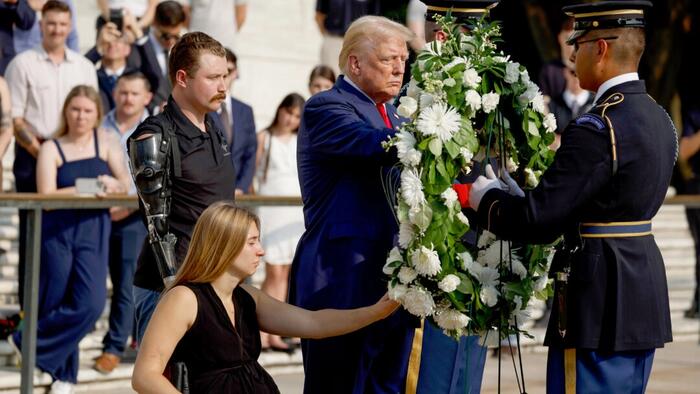On August 26, during former President Donald Trump’s visit to Arlington National Cemetery, an altercation involving cemetery staff and Trump’s aides occurred while they were taking photos and videos in Section 60, where soldiers killed in recent conflicts are buried. The event coincided with the anniversary of the Kabul airport bombing that resulted in the deaths of 13 U.S. service members. In a heavily redacted report released by the U.S. Army, details emerged of a staffer attempting to enforce regulations against political activities on cemetery grounds, which allegedly led to a physical encounter described in the report as “simple assault.” The Army stated that the cemetery employee was pushed aside, but the incident ultimately ended without injuries or any intention to press charges, concluding the matter was handled appropriately.
The altercation was further complicated by conflicting narratives. The Trump campaign claimed that the cemetery employee was experiencing a “mental health episode” that involved blocking their team from performing their duties during a solemn ceremony. In contrast, the Army maintained that its employee acted with professionalism. A sworn statement concerning the incident, filed shortly after it occurred, was entirely redacted, leaving much of the context surrounding the altercation unclear to the public. However, the Army emphasized that while the situation was reported to law enforcement, it was not pursued further, confirming the appropriateness of the staff member’s actions and indicating the resolution of the incident.
The redacted report emerged in response to a Freedom of Information Act request by the nonprofit group American Oversight. This organization has a mission to promote transparency and accountability in government, spurred by concerns over the Trump administration’s impact on democratic values. A U.S. District Court judge ordered the Army to release the nonexempt portions of the report by October 25. American Oversight argued that there is a significant public interest in disclosing details from the incident, particularly as the government is scrutinized in light of an upcoming presidential election.
After the initial reports of an altercation, the cemetery spokesperson confirmed that an incident report had been filed, yet refrained from providing specific details due to legal constraints regarding political campaigning on military cemetery grounds. The Trump campaign challenged the existence of any altercation, suggesting it possessed documentary evidence to refute accusations made against them regarding the staffer. A spokesperson from the campaign noted that a private photographer was on-site and asserted that no confrontation occurred.
Moreover, the reactions from family members of fallen soldiers also contributed to the narrative, as they refuted claims of any physical confrontation during the event. They contended that the situation was misrepresented and that the memorial ceremony maintained its dignity throughout. The complexity surrounding the event echoed broader themes of political sensitivities regarding the military and how public figures engage with commemorative spaces such as Arlington National Cemetery.
As the Oct. 22 ruling compelled the Army to disclose the redacted content, the incident served as a flashpoint for discussions on the intersection of military protocol and political activities, especially one involving a presidential candidate like Trump, known for engaging with military narratives in his political messaging. Through these revelations, ARLINGTON has become not only a symbol of national sacrifice but a battleground for political discourse as the nation approaches another election cycle, highlighting ongoing tensions between political actions and military respect.

